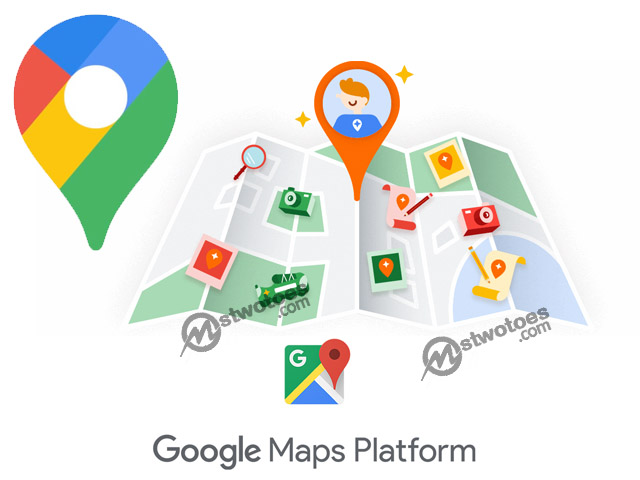How do I get started with Google Maps Platform? During our previous article, we talked about the Google Platform. However, in this article, we will talk about the simple step to get started with Google Maps Platform and also the various Google Maps Platform Pricing plans. In the meantime, almost everyone around the world is familiar with what Google Maps is. As a matter of fact, everyone makes use of Google Maps to get directions to places or locations. For instance, cars and drivers make use of Google Maps for direction.

The same also applies for businesses that includes shop, restaurants and lots more integrates the use of Google Map for rating, reviews and also to customers to gain direction. Currently, businesses are now built with Google Maps Platform for more convenience in mapping down a location. The Google Maps Platform is built-in with the latest feature that includes Maps Customization, Local Context, Gaming Solution, Routes, Places, Maps, Asset Tracking, and lots more. Many people make use of the Google Maps to get location or direction to a particular place.
List of Google Maps Platform Pricing
On the contrary, Google Maps Platform comes with a price that suite your preference. This also offers you $200 in free usages of Maps, Places, and Routes which comes monthly. As a matter of fact, you just need to pay for the services you use. Here are the following pricing plans to get started with Google Maps Platform.
Maps:
| Static Maps | Free for Mobile | $2 Per 1000 Requests |
| Dynamic Maps | Free for Mobile | $7 Per 1000 Requests |
| Local Context Map (Beta) | Free During Beta | Requires enabling Dynamic Maps $7 CPM |
| Static Street View | $7 Per 1000 Requests | |
| Dynamic Street View | $10 Per 1000 Requests | |
| Gaming Solution | $10 Per 1000 Requests |
Routes
| Directions | $5 Per 1000 Requests | |
| Directions Advanced | $10 Per 1000 Requests | |
| Distance Matrix | $5 Per 1000 Elements | |
| Distance Matrix Advanced | $10 Per 1000 Elements | |
| Roads – Route Traveled | $10 Per 1000 Requests | |
| Roads – Nearest Road | $10 Per 1000 Requests | |
| Roads – Speed Limits | $20 Per 1000 Elemets | |
| Gaming Solution | $10 Per 1000 DAU |
Places
| Geocoding | $5 Per 1000 Requests | |
| Autocomplete | $17 Per 1000 Requests | |
| Place Details | $17 Per 1000 Requests | |
| Find Place | $17 Per 1000 Requests | |
| Place Photos | $7 Per 1000 Requests | |
| Current Place | $30 Per 1000 Requests | |
| Geolocation | $5 Per 1000 Requests | |
| Time Zone | $15 Per 1000 Requests |
However, there are still unwritten information about the features of the Google Maps Platform based on the tablet format. However, to see more features of pricing plans, you can visit the Google Maps Platform pricing page.
How to Get Started with Google Maps Platform
Google Maps Platform is built with a set of APIs and also SDKs which is control via the Google Cloud console. However, four stages include Creating a billing account, Create a project, enable APIs or SDKs and Get add, and restrict an API Key to get started. The Google Cloud Platform is where you can get started with Google Maps Platform
1: Create a Billing Account:
- Visit the Google Cloud Platform Console.
- Next, click on the Menu icon and select Billing.
- Then, set up the billing account.
2: Create a Project:
- Visit the Google Cloud Platform Console.
- Click on the Menu icon and click Home.
- Click on the project drop-down menu to select New Project.
- Fill out the information to create your project.
- Then, click Create.
To Enables APIs or SDKs:
- Visit the Google Cloud Platform Console.
- Select APIs & Services from the menu button and click Library.
- From the API Library page, you click View All.
- From the Maps page, select API or SDK that you want to enable.
- Go back to the API Library page.
- Then, you can enable another API or SDK if you want to.
Finally, in other to get, add, and restrict an API Key, you can view the following above and select the API or SDK you wish to manage. However, you can use the provided a guide on the page to get, add, or restrict an API Key.

